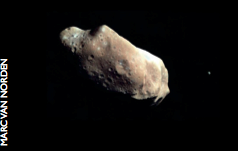TUESDAY, 13 MAY 2014
Currently about 1 in 7 people worldwide are chronically malnourished and, with the global population predicted to increase to 9 billion by 2050, food security is a hugely important issue. However, vast areas of viable agricultural land have already been, and will continue to be, converted for bio-fuel crop production, especially as oil prices continue to rise. Now, recent research appears to have discovered a potential new approach to developing biofuels quickly, using a method that doesn’t require large scale land conversion. It looks like bacteria could once again save the day. Streptomyces, a type of bacteria, can make and store large amounts of oils called triacylglycerols (TAGs), which are used in the production of biodiesel. Fortunately, as this versatile bacterium has been used extensively by the pharmaceutical industry to produce life-saving antibiotics, we already know how to grow it in huge amounts. The research, led by Deniset- Besseu’s team from the Université Paris-Sud, investigated how Streptomyces store TAGs. Using a novel instrument that combines an atomic force microscope with an infrared laser source, the team was able to identify the types of strains that accumulate lots of oil and those that store very little. Hence they were able to identify which strains might be the most productive to harvest. Furthermore, the researchers claim that their technique could greatly speed up the identification of other microbes that could also produce large amounts of bio-oil. Although biofuels will continue to be grown in the conventional way across the world for some time to come, this research does offer an exciting new avenue to be explored in the quest for both sustainable fuels and food security. ZacBaynham-Herd
Cancer treatment clogs circulation
although cancer patients are commonly treated with therapies that reduce the growth and spread of tumours by preventing the growth of tumor blood vessels, it has recently been shown that these ‘anti-angiogenic’ agents used in cancer patients prevent the natural dissolution of inappropriate venous blood clots (thrombi). If these thrombi persist, they can lead to debilitating symptoms such as leg pain and ulceration, or detach and lodge (thromboembolise) in vital organs including the lungs, heart and brain. This can result in pulmonary embolism, myocardial infarction and stroke, respectively. In their study published in Arteriosclerosis, Thrombosis, and Vascular Biology, authors from King’s College London and the Department of Physiology, Development and Neuroscience at the University of Cambridge showed that anti-angiogenic treatments slowed the already gradual process of organisation by which venous thrombi are naturally removed from the circulation. Given that venous thromboembolism is responsible for more deaths in the UK than breast cancer, road traffic accidents and HIV combined, and that cancer patients are approximately five times more likely to suffer from venous thromboembolism than non-cancer patients, authors concluded that “the pro-thrombotic effect of anti-angiogenic agents should be taken into consideration when managing the complications of venous thromboembolism in these [cancer] patients”. It is clear that the balance between therapeutic benefits and harmful side-effects should be carefully considered when treating cancer patients. While improved life expectancy and quality of life are the primary goals of most health-care treatments, this study highlights the importance of being aware of their possible consequences although cancer patients are commonly treated with therapies that reduce the growth and spread of tumours by preventing the growth of tumor blood vessels, it has recently been shown that these ‘anti-angiogenic’ agents used in cancer patients prevent the natural dissolution of inappropriate venous blood clots (thrombi). If these thrombi persist, they can lead to debilitating symptoms such as leg pain and ulceration, or detach and lodge (thromboembolise) in vital organs including the lungs, heart and brain. This can result in pulmonary embolism, myocardial infarction and stroke, respectively. In their study published in Arteriosclerosis, Thrombosis, and Vascular Biology, authors from King’s College London and the Department of Physiology, Development and Neuroscience at the University of Cambridge showed that anti-angiogenic treatments slowed the already gradual process of organisation by which venous thrombi are naturally removed from the circulation. Given that venous thromboembolism is responsible for more deaths in the UK than breast cancer, road traffic accidents and HIV combined, and that cancer patients are approximately five times more likely to suffer from venous thromboembolism than non-cancer patients, authors concluded that “the pro-thrombotic effect of anti-angiogenic agents should be taken into consideration when managing the complications of venous thromboembolism in these [cancer] patients”. It is clear that the balance between therapeutic benefits and harmful side-effects should be carefully considered when treating cancer patients. While improved life expectancy and quality of life are the primary goals of most health-care treatments, this study highlights the importance of being aware of their possible consequences. Colin Evans
NASA puts a guiding ARM around the shoulder of asteriods
nasa are developing an Asteroid Redirect Mission (ARM)–the first of its kind, in order to protect our planet from possible impacts. Near-Earth objects (NEOs) are interstellar debris that, thanks to the gravitational pull of our planet, have the potential to enter our atmosphere. One such NEO did just that in February of last year,
and exploded over Russia with the force of a large atomic bomb.
Tracking NEOs is not a new development, but ARM will work alongside technologies currently in development for sending humans to Mars in order to identify, capture and subsequently redirect candidate asteroids. Currently, NASA are working on two concepts: the first will capture and redirect a small asteroid, the second will retrieve part of a larger asteroid and then return it to a lunar orbit.
It is estimated that dozens of small (20-40 foot) asteroids fly past Earth every year that could be possible candidates for ARM, though these foreign bodies don’t reflect much sunlight, making them hard to spot. Currently, huge radar telescopes–some hundreds of feet wide–are needed to determine the size, rotation and destinations of these asteroids. Currently, roughly half of these are masked by the glare of the Sun. To aid their search, NASA have reactivated their NEOWISE spacecraft and are upgrading the detection capabilities of their telescopes. These developments don’t come cheap though, and NASA’s 2014 budget includes $105 million for the redirection of an asteroid, and to increase innovative partnerships and approaches to track and mitigate these potential threats. Joanna-Marie Howes


